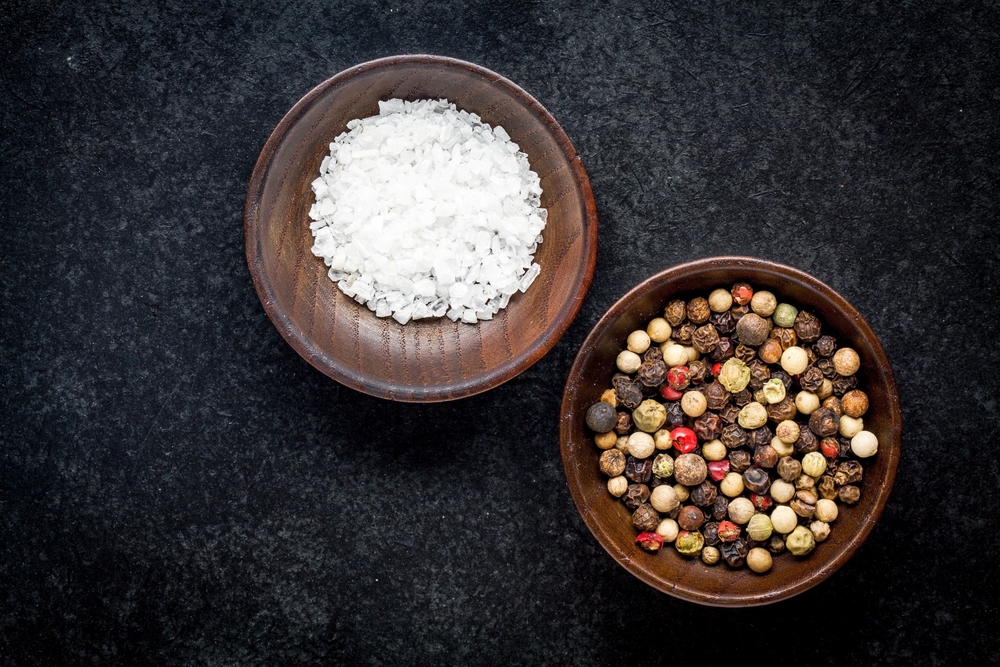How many of us have reached for the table-side salt and pepper shakers to further season our food once its arrived at the table? I dare say all of us. And I dare say that the salt and pepper in those shakers represent the simplest forms of those seasonings available. The salt is likely what’s known as table salt, which has had any impurities and trace minerals removed and iodine added, and the pepper is likely from ground black peppercorns of unknown age and origin. What more is there to know about salt and pepper than that? Well, truth be told, a lot more. Let’s begin the odyssey here–
Salt
There is no ingredient more essential to governing how food tastes than salt. Salt is one of the five basic “tastes,” or flavors, that the tongue senses, and it plays a major role in how the other four flavors are perceived. For example, salt can suppress bitterness and enhance sweet, sour and umami flavors in foods. Being thoughtful about how salt is used in food preparation can heighten the sensory experience of eating.
There are many types of salt to consider: kosher salt, fleur de sel and flake salt to name a few. Kosher salt is a flakier, non-iodized version of table salt; it dissolves easily and is a good all-purpose seasoning. Fleur de sel is a delicate, high mineral content salt and is used as a fancy finishing salt for sweet and savory foods. In contrast to fleur de sel, flake salt is a less expensive finishing salt with a low mineral content and good for finishing savory foods, especially meats. The list of salts for seasoning is extensive and certainly worth exploring to enhance one’s culinary perspective.
Pepper
Black pepper differs from salt in that it is the desiccated fruit of a flowering vine. It comes from ground or crushed black peppercorns. Whereas salt is a flavor enhancer, pepper adds a spicy dimension to foods. Like salt, there are many varieties of pepper available. There is the ubiquitous black pepper that accompanies table salt at most meals, and then there are other types of pepper that are used less often as seasoning for foods.
There is white pepper which is black pepper with the skin removed. White pepper has a less complex flavor than black pepper, and it is often used in lieu of black pepper in light-colored dishes when the cook wants a peppery flavor without any dark specks. Then, there are green and red peppercorns that are from the same plant as black peppercorns, but processed in different ways to preserve their color. Pink peppercorns come from a different plant altogether than the other peppercorns, and they impart a spicy heat to foods that is more akin to chile peppers than black peppercorns.
With so many types of salt and pepper available, the journey to explore them all may seem endless, but certainly well worth the time. Let the odyssey begin!







